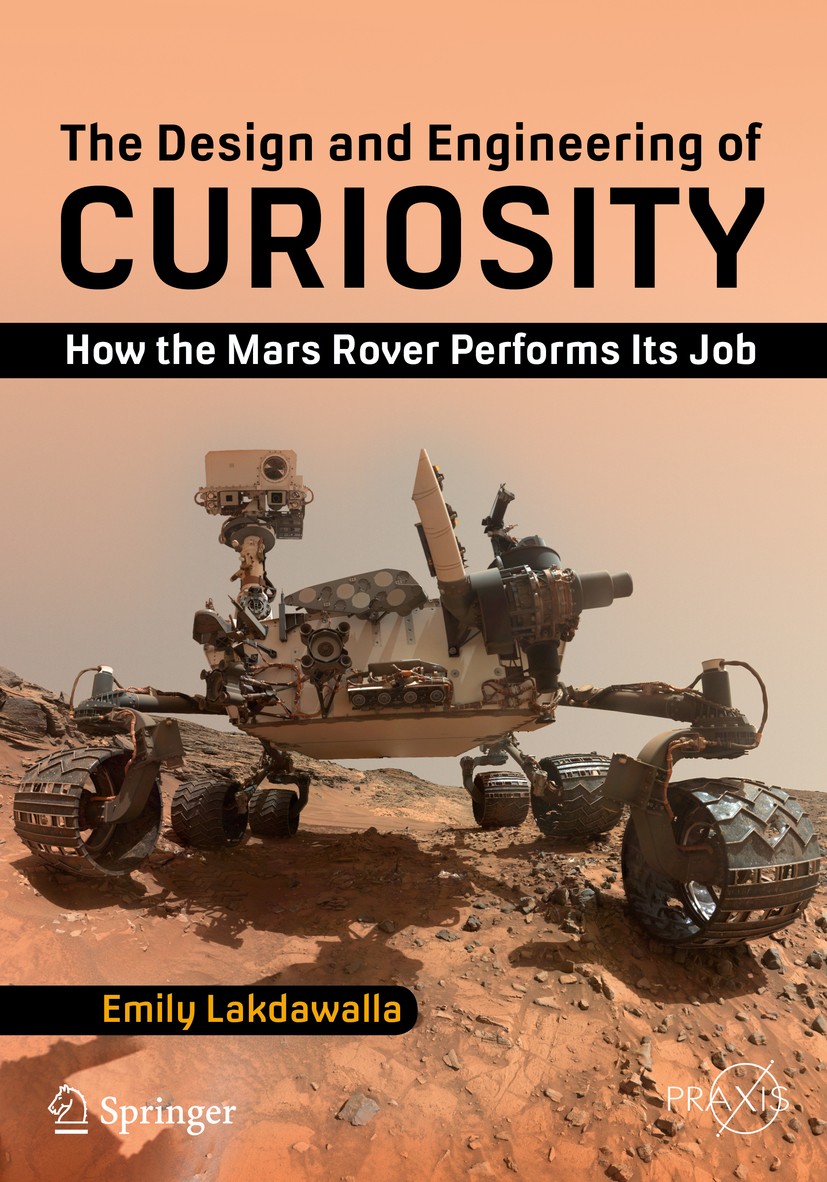| 书目名称 | The Design and Engineering of Curiosity | | 副标题 | How the Mars Rover P | | 编辑 | Emily Lakdawalla | | 视频video | http://file.papertrans.cn/908/907367/907367.mp4 | | 概述 | Based on interviews with the scientists and engineers who built and now operate the rover.Explains how the rover has actually functioned on Mars, including the wear on its components.Collects a wide v | | 丛书名称 | Springer Praxis Books | | 图书封面 |  | | 描述 | .This book describes the most complex machine ever sent to another planet: Curiosity. It is a one-ton robot with two brains, seventeen cameras, six wheels, nuclear power, and a laser beam on its head. No one human understands how all of its systems and instruments work. This essential reference to the Curiosity mission explains the engineering behind every system on the rover, from its rocket-powered jetpack to its radioisotope thermoelectric generator to its fiendishly complex sample handling system. Its lavishly illustrated text explains how all the instruments work -- its cameras, spectrometers, sample-cooking oven, and weather station -- and describes the instruments‘ abilities and limitations. It tells you how the systems have functioned on Mars, and how scientists and engineers have worked around problems developed on a faraway planet: holey wheels and broken focus lasers. And it explains the grueling mission operations schedule that keeps the rover working day in and day out. . | | 出版日期 | Book 2018 | | 关键词 | Mars Science Laboratory; Gale Crater; Mars rovers; Rocker-Bogie Suspension System; Autonomous Navigation | | 版次 | 1 | | doi | https://doi.org/10.1007/978-3-319-68146-7 | | isbn_softcover | 978-3-319-68144-3 | | isbn_ebook | 978-3-319-68146-7 | | copyright | Springer International Publishing AG, part of Springer Nature 2018 |
The information of publication is updating

|
|
 |Archiver|手机版|小黑屋|
派博传思国际
( 京公网安备110108008328)
GMT+8, 2025-12-17 21:07
|Archiver|手机版|小黑屋|
派博传思国际
( 京公网安备110108008328)
GMT+8, 2025-12-17 21:07


